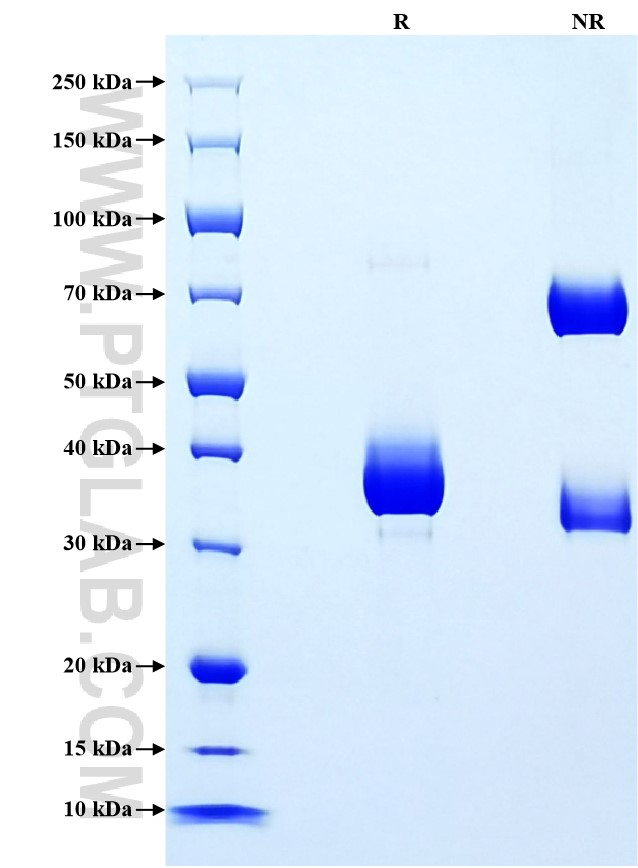Recombinant Mouse CCL3 protein (rFc Tag)
种属
Mouse
纯度
>90 %, SDS-PAGE
标签
rFc Tag
生物活性
未测试
验证数据展示
产品信息
| 纯度 | >90 %, SDS-PAGE |
| 内毒素 | <0.1 EU/μg protein, LAL method |
| 生物活性 |
Not tested |
| 来源 | HEK293-derived Mouse CCL3 protein Ala24-Ala92 (Accession# P10855) with a rabbit IgG Fc tag at the N-terminus. |
| 基因ID | 20302 |
| 蛋白编号 | P10855 |
| 预测分子量 | 35.1 kDa |
| SDS-PAGE | 33-40 kDa, reducing (R) conditions |
| 组分 | Lyophilized from 0.22 μm filtered solution in PBS, pH 7.4. Normally 5% trehalose and 5% mannitol are added as protectants before lyophilization. |
| 复溶 | Briefly centrifuge the tube before opening. Reconstitute at 0.1-0.5 mg/mL in sterile water. |
| 储存条件 |
It is recommended that the protein be aliquoted for optimal storage. Avoid repeated freeze-thaw cycles.
|
| 运输条件 | The product is shipped at ambient temperature. Upon receipt, store it immediately at the recommended temperature. |
背景信息
Chemokine (C-C motif) ligand 3 (CCL3), also known as MIP-1 alpha, belongs to the family of chemokines. CCL3 has been found in the central nervous system and its cognate receptors, CCR1 and CCR5, have been reported to be expressed by astrocytes, microglia and neurons. CCL3 and its receptors, CCR1 and CCR5, also contribute to the development of bone disease in multiple myeloma by supporting tumor growth and regulating osteoclast differentiation. CCL3 is also associated with the regulation of cell growth, angiogenesis, and metastasis of different tumors such as melanoma, renal cell carcinoma, and colorectal cancer. Moreover, CCL3 enhances cell migration and metastasis by up-regulating matrix metalloproteinase-2 (MMP)-2 expression in chondrosarcoma cells.
参考文献:
1. Menten P. et al. (2002). Cytokine & growth factor reviews. 13:455-481. 2. Vallet S. et al. (2011). Leukemia. 25: 1174-1181. 3. Nakasone Y. et al. (2012). Am J Pathol. 180: 365-374. 4. Wu Y. et al. (2008). J Immunol. 181: 6384-6393. 5. Zhu X. B. et al. (2012). Neurobiol. 38: 602-616.
